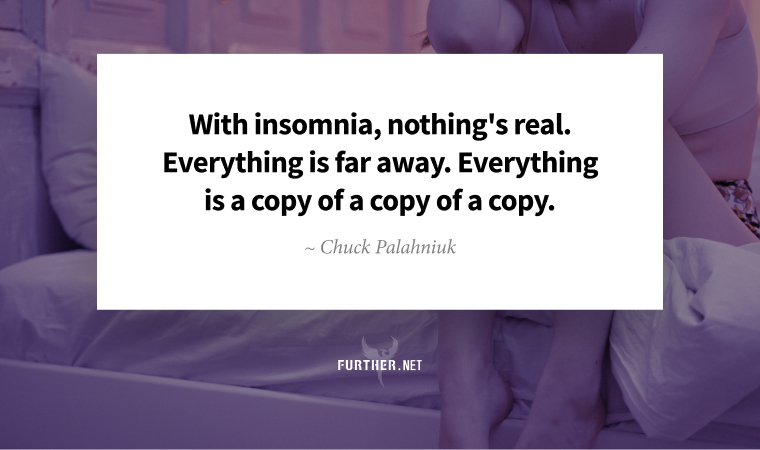
We often talk about the importance of sleep here at Further. It’s essential for a healthy immune system and cognitive function. It helps safeguard your system from chronic illnesses (i.e., heart disease, Type 2 diabetes, depression). And for those of us over 50, better sleep duration decreases the risk of dementia.
In other words, consistent sleep is critical for both lifespan and healthspan.
Catching z’s isn’t necessarily an issue for those who experience occasional sleep disturbances. But for around one-third of all adults, insomnia means it’s impossible to ever rest assured.
I’m Wide Awake; I’m Not Sleeping
If you want to beat chronic insomnolence, it helps to understand what causes it in the first place.
Topping the list are stress and anxiety. Thanks to today’s pandemic-related pressure cooker, the American Academy of Sleep Medicine reports around 60% of adults are experiencing “coronasomnia.” There are other contributing factors, too, like disrupted circadian cycles (later or inconsistent bed/wake times), too much time inside, and increased alcohol and “comfort” (read: crappy) food consumption.
Plus, there’s the dirty secret many of us keep: work from home has allowed us to treat our boudoir like a boardroom. Experts like sleep medicine physician Dr. Ilene M. Rosen warn against blurring the lines between work and sleep.
The bed is for sleeping or sex. If you’re not doing either of those things, then get out of bed.
Of course, not all sleep disturbances have psychological or behavioral causes. An underlying medical condition like restless leg syndrome or sleep apnea may be the culprit. If you suspect that’s what’s happening, consult a doctor. (Visit sleepeducation.org to find a local sleep practitioner or physician.)
Regardless of the source of your sleeplessness, there are numerous slumber-inducing strategies (beyond those of a chemical nature) you can try to break the cycle of insomnia.
Enter Sandman
An excellent way to start is to use cognitive-behavioral inspired techniques — that is, make choices that address underlying causes of restlessness, specifically anxious or negative thoughts. So, for example, use the 25-minute rule: if you can’t fall or stay asleep for 25 minutes, get up and do something relaxing, like read a book in low light, meditate, do a light breathing exercise, or listen to a soothing song or podcast.
Or, you can try the kinds of sleep-inducing things other people find helpful but experts may not embrace. For example, streaming a favorite TV show can calm you, even though device screens’ blue light generally disrupts sleep. Others resort to reading technical non-fiction (read: boring, which makes me wish I kept my college economics textbooks). Even a bland, carb-rich midnight snack might help.
Finally, as long as you’re up, here are some articles from the Further archives with plenty of doze-inducing advice:
- Why Gen X Women Can’t Sleep and What to Do About It
- Here’s Why You’re Stupid Without Sleep
- Walk This Way to Get Better Sleep
- How to Fall Asleep in Two Minutes
- Sleep Better, Live Longer
With that, I bid you a good night!
Wide Awake at 3 A.M.? Our Readers Offer Advice (New York Times)
The Pandemic Messed With Your Sleep. Here’s How to Feel Rested Again (New York Times)
